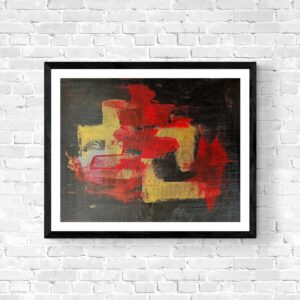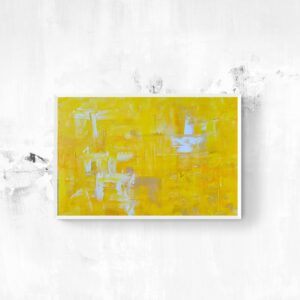Alive. Synthetic Cells, Feral Robots, Rebellious AI, & the Design of Radical Life, by artist, writer, filmmaker, architect and educator Madeline Schwartzman. Foreword by writer Edward Ashton. Published by Thames & Hudson.

Madeline Schwartzman brings together scientific research, AI, design and art to explore the flourishing menagerie where the distinction between living and non-living is blurred. Her book contains rats with human cells, rats driving cars, silicone jellyfish with a rat heart, human with a pig’s kidney, xenobots, electronic birds as stand-ins for living songbirds, memories passed from one snail to another, human/pig embryos, etc. It also contains essential reflections on the need to expand our views of what it means to be alive in a world where hybrid beings are being manufactured, engineered or bred.

Kim Jones, Telephone Pole, 1978. Photo: Ned Sloane

Alireza Ramezani, Bat Bot, 2016
At a time when the media seem to be obsessed with everything AI, Alive. Synthetic Cells, Feral Robots, Rebellious AI & the Design of Radical Life reminds us that new forms of life are being made, remodelled and revolutionised in laboratories too. And these forms of life that bypass Darwinian evolution are often as fascinating as the algorithmic ones. If not more.

The Tissue Culture & Art Project (Oron Catts, Ionat Zurr) with Devon Ward, Compostcubator, 2019
Pinar Yolas, The very loud chamber orchestra of endangered species, 2013
Behind its impeccable design and entertaining illustrations, the book has ambitious objectives, such as devising a new taxonomy for hybrid types of beings, surveying the consequences of our tinkering with life, revealing where humans may be headed into the future, challenging us to serve as partners and stewards for new types of beings and asking uncomfortable questions:
To what extent can AI resurrect life? Can you teach AI to perform drag? Can digital characters engage in a digital strike? In a few years, when countless robots will roam cities, how will we dispose of their expired remains? Why does it seem to be easier to grant personhood to rivers than to animals? What could a little animism do for the planet? Can humans ever properly steward life? What is more alarming: the idea of a computer taking over the world or synthetic cells running wild?

Agnes Questionmark, TRANSGENESIS, 2021
Wombin Yang, Umbra infractus, from theSpecies series
Alive is a brilliant book. Pop and profound. Humorous and thought-provoking. It strikes a balance between lightness and an urgent call to integrate ethics into computer and life sciences.
Quick overview of the chapters:
New Embodiment asks where embodiment begins, where it ends and how the embodiment of machines, animals or other entities affects our brain. Embodiment is a concept difficult to grasp. Not only does it depend on culture and perspective, but, in a world that is constantly reinventing the ways of having a body, fabricating a body, commandeering a body or being like a body, the concept is also in constant evolution.
Chimera is about uncanny hybrids that emerge on the ever-changing threshold of the monstrous. The chapter moves from cellular entities to real biological beings used in combination with synthetic materials and microcontrollers. It sounds a bit outlandish and abstract until Madeline Schwartzman reminds the reader that each of us is a fusion of disparate beings, a chimera. All humans are inhabited by trillions of microorganisms, mostly bacteria.
Cellular Packages explores the manipulation of cells, tissues and organs. While the chapter – with its cellular performance using microbes, future materials made from extinct creatures and other eerie experiments – is fascinating, it also discusses the dangers of intervening at the cellular level and the need for thoughtful ethics.
Biomimicry looks at how robots can assimilate the physical superpowers, morphology and individual and group behaviour of animals (including human animals and extinct animals.)
Change of State investigates the big and small acts that can lead to a deeper connection with the Earth, landforms, forests and ice. Looking at them as living entities may be a way to fight shifting baseline syndrome. I loved that chapter. I thought the idea of engaging with the Earth as an entity was a bold and smart idea.
The Phantasia is all about the dreams and delusions of the body. A guide to the way our brain is changing when we break taboos regarding body modification and challenge the limits of the body in the most radical, fantastical ways.
Algorithmic Futures investigates how AI affects our physical reality. And vice versa.
Some of the works i discovered in Alive:

Donald G. Rodney, In the House of My Father, 1996–7
Donald Rodney made tiny house from his own skin while in hospital bed.

Tim Lewis, The Forest Visits (detail), 2023
Tim Lewis created the upside-down tree with the head of an echidna out of abandoned xmas tree trunks.

David Altmejd, The Flux and the Puddle, 2014. Photo: James Ewing

Candice Lin, Memory (study #2), 2016
Lion’s mane mushrooms grows from a red ceramic vessel. The fungi are nourished by a fine mist of distilled urine donated by the people working for the exhibition space. People donate their care and waste and, in return, the mushroom grows; edible and medicinal. Memory Study #2 stages a mutualism where nourishment circulates between bodies.

Sean Raspet and researcher Kiara Eldred, Screen (EP1.1 iPSCs stem cell line–derived human retinal organoids), 2018-2019. Photo: Michael Yu
John Walter, A Virus Walks into a Bar, 2018

Jiwon Woo, Mother’s Hand Taste (son-mat), 2016-2017. Jiwon Woo collected microbes from four three-generation Korean households located in Korea, Japan, USA and the Netherlands

Burton Nitta, New Organs of Creation, 2019

Thomas Feuerstein, Octoplasma, 2017
Michael Candy, Synthetic Pollenizer, 2014-7

Agnes Meyer-Brandis, Teacup Tools, 2014-ongoing
Prokop Bartonicek and Benjamin Maus, Jller, 2015

Uli Westphal, Elephas Anthropogenus, 2008
After the fall of the Roman Empire, elephants virtually disappeared from Western Europe. And with it knowledge about how they actually looked. Illustrators relied on oral and written transmissions to morphologically reconstruct the animal. Uli Westphal made a tree diagram that traces the evolution of the elephant depiction throughout the Middle Ages up to the Enlightenment.
Jake Elwes, The Zizi Show, 2020

Kelly Heaton, Transparent Bird, 2019

Stephanie Dinkins, Not the Only One V1 (black), 2018

Ian Cheng, Emissary in the Squat of Gods, 2015

Pierre Huyghe, After UUmwelt, 2021. Photo: Ola Rindal
Book spreads:













